#SEO optimization tips
Explore tagged Tumblr posts
Text
The Role of Website User Experience (UX) in Service Business SEO Success

A fast, user-friendly website isn’t just a tech perk—it’s an SEO essential. Search engines reward websites that provide a smooth experience, especially for mobile users.
Here are some of the most effective SEO strategies for service-based companies that also improve user experience:
UX-focused SEO tips:
Use mobile-friendly responsive design
Improve site speed with image compression and minimal scripts
Create clear navigation and intuitive menus
Break content into scannable sections with headers
Ensure all pages are accessible within 2-3 clicks
Add clear CTAs and contact forms
Use secure HTTPS protocol
Avoid popups or intrusive design elements
UX improvements boost your rankings and reduce bounce rates, leading to more inquiries and conversions from your website visitors.
Looking for expert local SEO services that also focus on UX? Connect with Rohring Results to optimize your site today.
#rohring results#seo company for small businesses#Service Business SEO#Website User Experience#SEO Optimization Tips
0 notes
Text
Mastering On-Page SEO: A Step-by-Step Guide for Beginners
Discover the ultimate step-by-step guide to mastering on-page SEO for beginners. Learn practical tips to optimize your content, boost search engine rankings, and drive organic traffic to your website.
#SEO Guide for Beginners#Step-by-Step SEO#SEO Optimization Tips#Improve Website Rankings#Keyword Optimization#Beginner’s SEO Guide#On-Page Optimization#SEO Basics#Organic Traffic Growth
0 notes
Text
Advanced SEO Techniques for 2025: How to Stay Ahead of the Competition.

Stay ahead in the competitive digital landscape with Advanced SEO Techniques for 2025. Focus on user intent, AI-driven strategies, mobile optimization, and enhanced on-page practices to boost rankings and improve user engagement. Learn how to leverage schema markup, optimize Core Web Vitals, and avoid blackhat tactics for sustainable growth. Master these strategies with expert insights and courses from Sage Titans Academy to secure your SEO success.
#seo optimization techniques#advanced seo techniques#advanced seo course#advanced seo interview questions and answers#advanced seo questions#advanced seo techniques course#seo advanced techniques#seo optimization tips#on page seo techniques#blackhat seo techniques
0 notes
Text
Repurposing Content Like a Pro: Maximizing ROI
Boost your ROI by repurposing your content! Learn strategies to turn one piece into many and reach new audiences with ease. #ContentMarketing #RepurposingContent
Repurposing Content Like a Pro: Maximizing ROI Written By: that Hannah Jones Time to Read: 5 minutes In content creation, efficiency is key. Repurposing your existing content allows you to reach new audiences, extend the lifespan of your work, and maximize the return on your time and investment. Rather than constantly creating new material, repurposing enables you to present the same…
#Audience Engagement#blog repurposing#blog to social media#boost engagement#content bundles#content creation efficiency#content for lead generation#Content marketing#content marketing strategy#content reach#content repurposing strategies#content ROI#content transformation#creating e-books#digital marketing#Digital Marketing Tips#infographics for content#lead magnet ideas#marketing efficiency#maximize content ROI#multi-platform content#repurposing content#repurposing for social media#save time on content#SEO optimization tips#Social Media Marketing#social media strategy#video to blog post#video transcription#Visual Content
0 notes
Text
Unlocking Online Visibility: Essential SEO Optimization Tips
In the ever-evolving digital landscape, mastering the art of SEO (Search Engine Optimization) is the key to unlocking your online presence. Dive into the world of SEO optimization tips and discover how you can propel your website to the top of search engine rankings. From keyword research to mobile optimization, these essential tips will help you navigate the complexities of SEO and attract more organic traffic to your site.
First and foremost, understanding your audience is crucial to crafting an effective SEO strategy. Conduct thorough keyword research to identify the terms and phrases your target audience is searching for. By integrating these keywords strategically into your website content, you can enhance your visibility and attract qualified traffic. Additionally, optimizing your website for mobile devices is essential in today's mobile-centric world. Ensure that your site is responsive and loads quickly on all devices to provide a seamless user experience and improve your search engine rankings.
Furthermore, quality content is king when it comes to SEO optimization. Create compelling, informative, and relevant content that resonates with your audience and addresses their needs and pain points. By consistently publishing high-quality content, you not only establish yourself as an authority in your niche but also increase the likelihood of earning valuable backlinks from other reputable websites. Remember, SEO is a long-term game, so stay patient, stay persistent, and stay committed to implementing these SEO optimization tips to achieve sustainable growth and success online.

0 notes
Text
🔍 Traditional SEO vs. Current SEO 🚀 SEO tactics have changed considerably as the digital landscape has evolved. Traditional SEO concentrated on keywords and backlinks, but modern SEO prioritizes user experience and intent. 🎯
From meta tags to mobile optimization, SEO is no longer only about rankings, but also about providing value to your audience. 💡 📣 Let's talk about how SEO has evolved and how we can use it to build our businesses. Please share your thoughts below! 👇
#seo expert#seo tips#seo services#seo#seo package#digital marketing#online marketing#search engine optimization
24 notes
·
View notes
Text

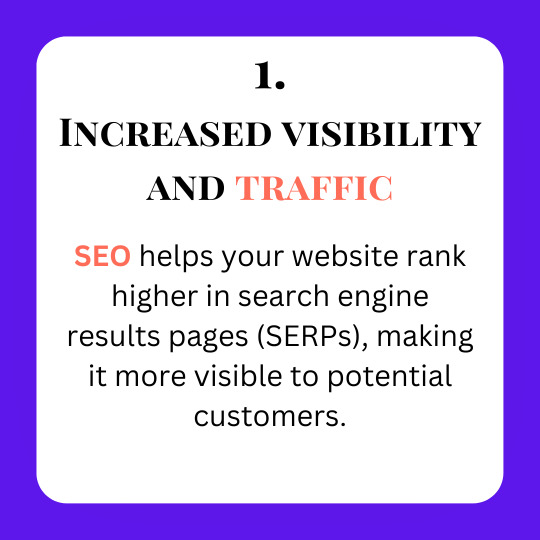
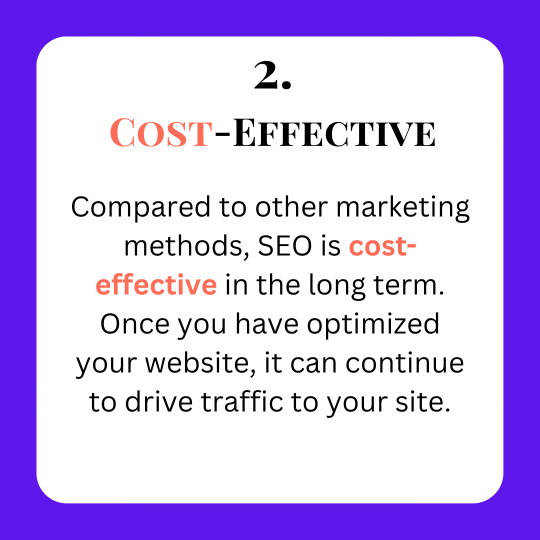
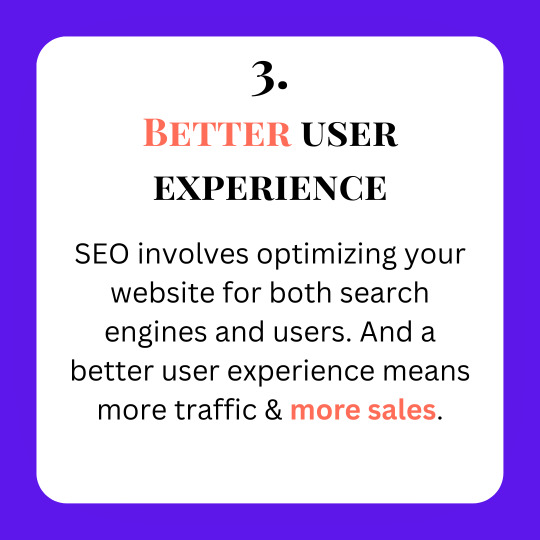
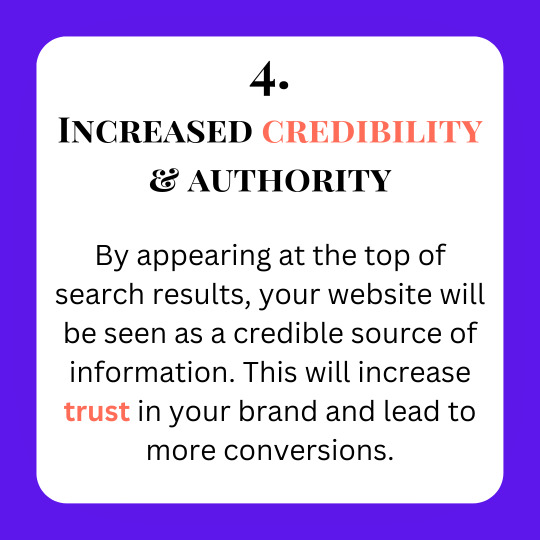
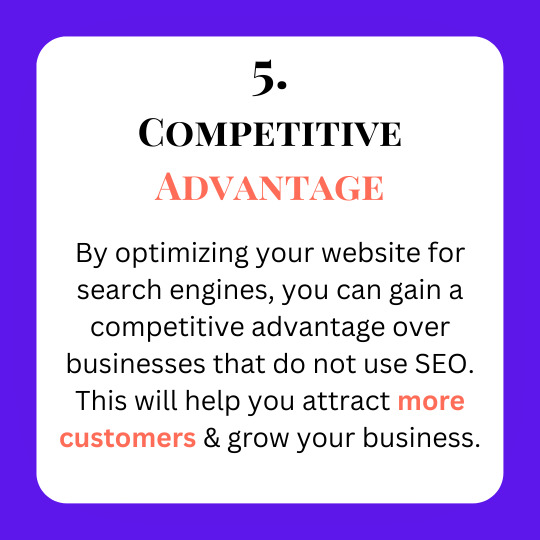
Unveiling 5 Benefits of SEO that will transform your online presence and elevate your business to new heights!
Don't wait, start increasing your search engine visibility today ! Get in touch with us. We'll help you to gain more organic traffic.
#seo expert#seo tips#seo services#seo company#seo marketing#search engine optimisation sydney#search engine optimization#search engine optimisation services#digital marketing#digital marketing agency#online marketing#online business#australia#usa#uk#nz
43 notes
·
View notes
Text
🚫 Top YouTube Thumbnail Mistake on iOS (And How to Fix It)
At Betafore, we are passionate about all things digital, from crafting flawless code to creating YouTube thumbnails that compel viewers to pause. Bad thumbnail designs that don't work on phones, especially iPhones, are one of the biggest mistakes that even the best makers make.
If you're losing views or struggling with click-through rates, this post is for you, because the problem might not be your content, but your thumbnail. Thumbnails are the first thing people see when browsing, and if they’re not eye-catching or clear, viewers may scroll right past your video, no matter how great it is. A well-designed thumbnail acts like a billboard for your content, grabbing attention, sparking curiosity, and encouraging clicks. In today’s crowded YouTube space, your thumbnail could be the key difference between getting lost in the feed or standing out and getting watched.
What is a YouTube thumbnail?
YouTube thumbnail is the small preview image that represents a video and helps attract viewers by giving them a quick idea of the content. It's often custom-designed with bold visuals, readable text, and eye-catching colors to stand out in search results and recommendations. A good thumbnail can significantly increase clicks and views by making the video more appealing and clickable.
📱 The #1 YouTube Thumbnail Mistake on iOS

Safe Zone Violation In Design: A safe zone violation is created by placing significant components, such as faces or text, in close proximity to the borders of your thumbnail.
On iOS, YouTube overlays things like:
The length of the video
A "Watch Later" button
Playlist icons
These run exactly on top of your thumbnail corners. So, guess what if you have forced your strong title or face expression into the corner? Readers of iPhones cannot see it. It is either covered or clipped.
Other Common Mistakes to Avoid
The majority of YouTube traffic comes from mobile devices, and if your thumbnails aren’t optimized for small screens, you're likely losing a huge chunk of potential viewers before they even click. Below are common thumbnail mistakes that can cost you views, along with why they matter and how to fix them:

How to Design Better YouTube Thumbnails for Mobile
Here are Betafore’s top tips to make sure your YouTube thumbnail design is optimized for iOS and mobile devices:
Use a safe zone - Keep text and faces away from the outer edges.
Think BIG - Text that is bold and has a lot of contrast always wins..
Check mobile previews - Use YouTube Studio or test thumbnails on your iPhone before uploading.
Put feeling first - Faces with strong expressions always get more clicks.
Design mobile-first - Over 70% of YouTube traffic comes from phones. If it works on iOS, it’ll shine everywhere.
Why Better Thumbnails Matters?
“90% of the best-performing videos have custom thumbnails, according to Google Help.”
A strong YouTube thumbnail isn’t just about looks , it drives clicks, increases engagement, and boosts your content in the algorithm. And with most users on mobile, iOS optimization is non-negotiable.
At Betafore, we help creators, influencers, and brands design content that doesn’t just look good but also performs.
Want Thumbnails That Drive Real Results
From high-performing websites to thumb-stopping visuals, we build digital experiences that drive results. Design. Strategy. Impact - every click counts.
📬 Work with us 🌐 Visit betafore.com 📱 Follow us for more tips: Tumblr | LinkedIn | Instagram
#youtube thumbnail design#youtube tips#mobile optimization#ios design#content strategy#betafore#youtube seo#video marketing#thumbnail fails#creator tips
4 notes
·
View notes
Text

Advanced SEO Marketing Tips for Explosive Website Growth
Ready to take your SEO game to the next level? These advanced SEO marketing tips will help you increase rankings, improve user experience, and maximize conversions. Get expert strategies that top marketers use to dominate search engines!
#seo#seo services#web development#website optimization#seo tips#seo search engine optimization#organic traffic#business growth
3 notes
·
View notes
Text
How to write a high-ranking travel blog?
I just realized something—I love writing about travel. Maybe it's because I don’t get to travel as much as I want, but deep-diving into destinations, cultures, and hidden gems? That’s my jam.
Lazy writers just throw in words like exquisite dining and culinary delights (ugh). I dig deeper—Reddit, Quora, local blogs—because good travel writing feels like a journey, not just a list of fancy adjectives.
Oh, and if you're writing about a luxury destination? Find what makes it stand out, not just how it looks. Add your voice, your style, and relevant keywords to make it rank better.
#seo#content writing#search engine optimization#seo tips#blogging#blog post#travel#blog#writing#keyword research
3 notes
·
View notes
Text
SEO Hindi Me Kya Hai? Know Complete Information In Just 2 Minutes
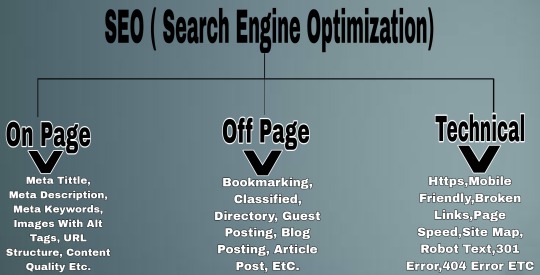
Curious about SEO Kya Hai? Search Engine Optimization (SEO) is the process of improving website visibility on search engines like Google.
By optimizing content and following best practices, you can increase organic traffic to your site. It involves keyword research, meta tags optimization, link building, and more.
Understanding SEO is crucial for boosting online presence and reaching a wider audience. Stay tuned for more insights on how to enhance your digital marketing strategy with effective SEO techniques!
. 🌐 Click the link above to read more! . Contact us here:-👇 . 📧 Official Gmail ID: [email protected] . 👉 Follow us to get more informative posts: @akgtechinfo
#what is seo#seo tips#digital marketing#search engine optimization#seo basics#seo for beginners#online marketing#seo training#grow your business#digital strategy#inbound marketing#seo
4 notes
·
View notes
Text
youtube
5 Steps To Master The Art Of Influencer Marketing - #TravisBurchGoldCoast #Google #Digitalmarketing #marketing #SEO #Marketing #SEOTechniques #PPC #OrganicTraffic #GuestPost #socialmediamarketing
#Content Marketing#digital marketing#social media marketing#marketing tips#SEO#Search Engine Optimization#Travis Burch Gold Coast#Gold Coast#internet#Youtube
3 notes
·
View notes
Text
The Relevance of Conducting Keyword Research in Digital Marketing
In a world dominated by technology where businesses require visibility to succeed. The only way to cut through the noise of millions of websites is to know what your audience wants, and then create content that addresses that need. This is where conducting keyword research comes in- it is a critical building block that goes into constructing a good digital marketing strategy.
Understanding Keyword Research :
In most cases, users do not type in full sentences into search engines- instead, they search for keywords and phrases. Keywords are what connect the questions asked by the user, to a piece of content prepared to answer the query. Identifying keywords allows businesses to create content that users are looking for, increasing their chances of ranking higher in search results, and making more sales.
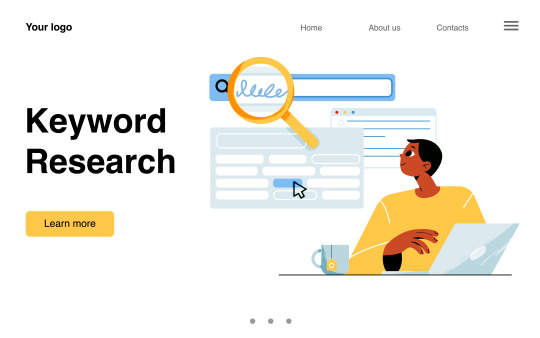
Why Is Keyword Research Important?
A Better Return On Investment (ROI): Returning from targeted ads is higher than any other form or investing in advertising channels, for example: Pay per click adverts.
Increased Visibility: It is extremely hard to get noticed as a new website, and investing in keywords will allow you to boost your website’s organic traffic.
Understanding Audience Intent: Good keyword research helps you understand what your target audience is looking for and how they phrase their queries. You can, therefore, create content that directly answers their needs, thus building trust and fostering engagement.
3. Competitive Advantage: Analyze the keywords your competitors are targeting, find gaps in their strategy, and identify opportunities to differentiate your content. This way, you are ahead in a crowded marketplace.
4. Cost-Efficient Advertising: Keyword research for paid campaigns is very important. For example, Google Ads has to be able to select appropriate cost-effective, high-performing keywords. So, targeting the right keywords really minimizes waste and maximizes ROI.
5. Content Strategy Development: It acts as a roadmap for content strategy. By creating blog posts, videos, and other such assets that actually resonate with the audience while satisfying the search engines, it provides a well-researched list of keywords.
Effective Keyword Research Tips
Use Tools: Utilize Google Keyword Planner, SEMrush, or Ahrefs to uncover the volume, competition, and trend of your keyword.
Long Tail Keywords: Be more specific as they tend to have less competition and more chances of conversion
Search Intent: Identify if it is an information intent, a navigational intent, or transactional intent to use it appropriately for your content.
Keep fresh: trends in searches change, and your keyword approach should be reviewed regularly.
Keyword research is far from a technical task; it's a strategic initiative that bestows business the power to connect with audiences more effectively. The time and resources you invest in understanding the language of your customers set you up for long-term digital marketing success. Whether you are optimizing for organic search or planning a PPC campaign, keyword research is the compass guiding your efforts toward measurable results.
#Digital Marketing#SEO Strategy#Search Engine Optimization#Audience Intent#Content Marketing#PPC Campaigns#Long-Tail Keywords#Marketing Tips#Competitive Analysis#Online Advertising#Marketing Strategy#Website Traffic#Organic Search#Digital Marketing Trends#Keyword research#keyword research tools
2 notes
·
View notes
Text
The Ultimate SEO Checklist for Your Shopify Store
In today’s competitive eCommerce landscape, having a visually appealing Shopify store isn’t enough. To attract potential customers, you need a solid SEO strategy. Search Engine Optimization (SEO) helps your online store rank higher in search engine results, increasing visibility and driving organic traffic. Here’s your ultimate SEO checklist for optimizing your Shopify store.
1. Keyword Research
Start with thorough keyword research. Use tools like Google Keyword Planner or SEMrush to identify keywords relevant to your products. Focus on long-tail keywords that reflect your specific offerings, as they often have less competition and higher conversion rates.
2. Optimize Product Titles and Descriptions
Once you have your keywords, incorporate them naturally into your product titles and descriptions. Ensure that your titles are clear and descriptive, and that your descriptions provide valuable information that helps customers make purchasing decisions.
3. Use Alt Text for Images
Images are crucial in eCommerce, but they also need to be optimized for SEO. Use descriptive alt text for every image, incorporating relevant keywords. This not only helps search engines understand your images but also improves accessibility for visually impaired users.
4. Create SEO-Friendly URLs
Your store’s URLs should be simple, descriptive, and include relevant keywords. For example, instead of a URL like shopify.com/product123, use shopify.com/organic-cotton-tshirt. This improves both SEO and user experience.
5. Enhance Site Speed
A fast-loading website is vital for retaining customers and improving SEO rankings. Use tools like Google PageSpeed Insights to analyze your site’s speed and make necessary improvements, such as optimizing images and minimizing JavaScript.
6. Mobile Optimization
Ensure your Shopify store is mobile-friendly. With a significant portion of online shopping done on mobile devices, a responsive design is essential for both user experience and SEO.
7. Implement Internal Linking
Internal links help search engines understand the structure of your site and keep users engaged. Link relevant products, blog posts, and categories within your store to improve navigation and SEO.
8. Utilize Schema Markup
Schema markup enhances your store’s appearance in search results. Implementing this code helps search engines understand your content better and can lead to rich snippets, improving click-through rates.
9. Monitor Analytics
Use tools like Google Analytics and Shopify Analytics to track your store’s performance. Monitor metrics like traffic sources, bounce rates, and conversion rates to identify areas for improvement.
10. Build Quality Backlinks
Lastly, focus on building quality backlinks. Reach out to influencers, bloggers, and industry-related websites to gain links back to your store. Quality backlinks improve your domain authority and help boost search rankings.
Conclusion
Optimizing your Shopify store for SEO is an ongoing process that requires dedication and strategy. By following this ultimate SEO checklist, you’ll enhance your online visibility, attract more visitors, and ultimately drive sales. Start implementing these tips today and watch your Shopify store thrive!
#SEO#Shopify#eCommerce#Digital Marketing#Website Optimization#Online Store#SEO Checklist#Search Engine Optimization#Shopify Tips#Marketing Strategy
3 notes
·
View notes
Text
SEO for eCommerce: How to Optimize Product Pages That Actually Convert
Okay, let’s be honest — running an online store can feel overwhelming. You have products you’re proud of, but getting people to actually see those products? That’s a whole other story. And even when visitors land on your product pages, convincing them to hit “Buy” is a challenge.
This is where SEO (Search Engine Optimization) for eCommerce really shines. But here’s the catch: optimizing product pages isn’t just about sneaking in keywords. It’s about making your pages work hard for both Google and real people who might want to shop with you.
So, let me walk you through some practical ways to tweak your product pages so they don’t just get clicks — they get sales.
Why Should You Care About SEO on Product Pages?
Imagine you’ve got an awesome pair of wireless earbuds. They sound fantastic, have a sleek design, and the price is right. But if your product page is buried somewhere on page five of Google search results, no one’s going to find it. It’s like having a secret treasure no one knows about.
Good SEO makes your product page easier to find. More importantly, it helps show that your page is the place someone should buy that product.
But SEO isn’t a magic wand. It’s about building trust and making it simple for customers to understand why your product rocks.
Start With Keyword Research — But Don’t Overthink It
Keywords can sound intimidating, but think of them like the words people use when they’re chatting casually. Instead of “wireless earbuds,” someone might type “best earbuds for running” or “cheap wireless headphones.”
Grab tools like Google Keyword Planner or Ubersuggest — but also use your own brain. Ask yourself: how would I search for this product? What words would I type?
The goal is to find those keywords that people actually use, and that show they’re ready to buy.
Make Your Product Titles Friendly and Clear
Product titles are your shop window. If someone sees “Wireless Earbuds Model X,” that’s okay — but it’s a bit dull. What about “Bluetooth Wireless Earbuds for Running — Sweatproof & Long Battery Life”?
See how that tells a quick story? It hits keywords but also says, “Hey, these earbuds are made for runners and last long.” It helps both Google and your customer get what’s up, fast.
Write Product Descriptions Like You’re Talking to a Friend
Forget boring, copy-pasted descriptions. Imagine you’re describing your product to a buddy over coffee. What makes your earbuds stand out? Are they comfy? Do they block noise well? What problem do they solve?
Try something like:
“These earbuds stay put no matter how much you sweat, and with a 10-hour battery, they’ll keep up with even your longest runs.”
Keep it real and natural — don’t cram keywords in there like a robot.
Show Off Great Photos (and Don’t Skip Alt Text!)
People love good visuals. Take clear, bright photos from multiple angles. Show your earbuds in use, maybe even in a runner’s hand.
Also, optimize your images behind the scenes. Rename your files to descriptive names like “bluetooth-running-earbuds.jpg.” Use alt text that says what the image shows — this helps Google “see” your pictures and improves SEO a bit.
Keep It Easy to Scan
Long walls of text? No thanks. Use headings, bullet points, and short paragraphs.
For example:
Why You’ll Love These Earbuds:
Comfortable fit for all-day wear
Sweat and water-resistant
Crisp, clear sound quality
10-hour battery life
Quick to read, easy to understand.
Don’t Forget Customer Reviews — They Work Like Magic
People trust other people more than you, obviously. Display reviews and ratings right on your product page. Bonus: those reviews often add natural keywords because customers write what they think.
Speed and Mobile Matter — Big Time
If your product page loads slower than your patience on Monday morning, visitors will leave. Use tools like Google PageSpeed Insights to check speed and fix what’s slowing you down.
And with most people shopping on phones, your page better look good and work well on mobile.
Use Structured Data for That Extra Boost
If this sounds scary, don’t worry. Structured data is just a fancy way to tell Google things like price, availability, and reviews in a format it understands. This can get your product page those rich snippets in search results that stand out.
Many eCommerce platforms make adding this easy, or you can get a developer to help.
Link to Related Products and Categories
When someone is looking at your earbuds, why not show them matching accessories? Like “Check out our wireless charging case” or “Explore our full headphone collection.”
This keeps visitors clicking around your site and helps search engines understand your site structure.
Keep Learning and Tweaking
SEO isn’t a one-and-done thing. Watch how people find and use your product pages. Use tools like Google Analytics and Search Console to see what’s working and what isn’t.
If a product page gets traffic but no sales, maybe the description needs a tweak or the images could be better.
The Takeaway?
Optimizing your product pages is like setting up a little online shop window — you want it bright, welcoming, and easy to understand. It’s not just about impressing Google but making sure your real customers feel confident and excited to buy.
So next time you update your product page, remember: talk like a human, show off your product’s best side, and make it simple for shoppers to say “yes.”
If you want to chat more about this or get help putting these tips into action, just hit me up at e intelligence!
1 note
·
View note
Text
How to Create Designs That Work for Your Print-on-Demand Business
Running a print-on-demand business is both exciting and challenging. Whether you're selling on platforms like Redbubble or managing your own store, creating designs that resonate with your audience is the key to success. But how do you craft designs that not only look great but also sell? In this blog post, I’ll guide you through the process of creating designs that work for your print-on-demand business, with tips and tricks tailored to help you stand out in a competitive market. Let’s dive in!
Why Design Matters in Print-on-Demand
In the world of print-on-demand, your designs are your product. Unlike traditional retail, you’re not selling physical inventory—you’re selling ideas. Your customers are drawn to your creativity, so your designs need to:
- Capture attention: Bold, unique designs stand out in search results.
- Resonate with your audience: People buy designs that align with their personality, values, or interests.
- Fit the product: A design that looks great on a t-shirt might not work on a mug or phone case.
Understanding these principles is the first step to creating designs that work for your business.
Step 1: Know Your Niche
The most successful print-on-demand businesses are niche-focused. Instead of trying to appeal to everyone, target a specific audience.
- Research your audience: Who are they? What are their interests, hobbies, or values?
- Find trending niches: Use tools like Google Trends or Redbubble’s trending searches to discover what’s popular.
- Create for your passion: If you’re passionate about your niche, it will show in your designs.
For example, if your niche is cozy, minimalist designs, you could create products that appeal to people who love hygge-inspired aesthetics.
Step 2: Brainstorm Unique Design Ideas
Once you’ve identified your niche, it’s time to brainstorm ideas. Here’s how to get started:
- Use keyword research: Tools like Redbubble’s search bar or Pinterest Trends can help you find popular themes.
- Look for inspiration: Check out competitors, social media, or even nature for fresh ideas.
- Think seasonally: Holidays, seasons, and special events are great opportunities for themed designs.
Pro tip: Keep a notebook or digital folder for design ideas. Inspiration can strike at any time!
Step 3: Master the Tools of the Trade
You don’t need to be a professional graphic designer to create stunning designs. With the right tools, anyone can make high-quality artwork.
- Free design tools: Canva, GIMP, and Inkscape are great for beginners.
- Professional software: Adobe Photoshop and Illustrator offer advanced features for experienced designers.
- Mockup generators: Use tools like Placeit to see how your designs will look on products.
If you’re new to design, start simple. Minimalist designs with clean lines and bold typography are often bestsellers.
Step 4: Optimize Your Designs for Products
Not all designs work on every product. To maximize sales, tailor your designs to fit specific items.
- Consider placement: A design that looks great on a t-shirt might need adjustments for a mug or sticker.
- Use high-resolution files: Print-on-demand platforms require high-quality images to ensure sharp prints.
- Test your designs: Upload them to mockup tools to see how they look on different products.
For example, if you’re creating a design for a phone case, make sure the key elements aren’t cut off by the edges or camera hole.
Step 5: Write SEO-Friendly Titles and Tags
Even the best designs won’t sell if no one can find them. That’s where SEO comes in.
- Use relevant keywords: Include terms your audience is searching for, like “minimalist phone case” or “funny coffee mug.”
- Write descriptive titles: Instead of “Cool Design,” try “Retro Sunset Design for T-Shirts and Stickers.”
- Add detailed tags: Use a mix of broad and specific tags to improve your visibility.
For example, if your design is a cozy winter illustration, your tags might include “winter mug,” “cozy vibes,” and “holiday gift ideas.”
Step 6: Promote Your Designs
Creating great designs is only half the battle—you also need to market them.
- Leverage social media: Share your designs on Instagram, Pinterest, and TikTok.
- Engage with your audience: Respond to comments and messages to build a loyal following.
- Collaborate with influencers: Partner with creators who align with your niche to reach a wider audience.
You can share behind-the-scenes content, like your design process or mockups, to connect with your audience on a personal level.
Step 7: Analyze and Improve
Finally, track your performance to see what’s working and what’s not.
- Check your analytics: Platforms like Redbubble provide insights into your sales and traffic.
- Experiment with new designs: Test different styles, themes, or niches to see what resonates.
- Listen to feedback: Pay attention to customer reviews and comments to improve your designs.
Remember, success in print-on-demand is a marathon, not a sprint. Keep learning and adapting as you go.
Final Thoughts
Creating designs that work for your print-on-demand business takes time, creativity, and strategy. By understanding your niche, mastering design tools, and optimizing your listings for SEO, you can build a successful shop that stands out from the crowd.
You have the power to turn your ideas into products that people love. So, what are you waiting for? Start creating today and watch your business grow!
Looking for unique, cozy designs that inspire and stand out? Visit my Redbubble shop to explore a collection of creative products made just for you!
#Print-on-demand business#Redbubble tips#How to create designs#Print-on-demand design tips#Redbubble design ideas#Niche marketing for POD#How to sell on Redbubble#Print-on-demand success#Redbubble SEO tips#Best tools for POD#Graphic design for beginners#Trending print-on-demand niches#How to optimize designs#Print-on-demand marketing#Redbubble product ideas#Cozy design inspiration#Minimalist design tips#Seasonal design ideas#How to use Canva for POD#Redbubble mockup tips#Passive income with POD#How to sell art online#Redbubble shop strategies#Print-on-demand trends#How to grow a POD business#Print-on-demand branding#Redbubble keyword research#Social media for POD#Redbubble artist tips
3 notes
·
View notes